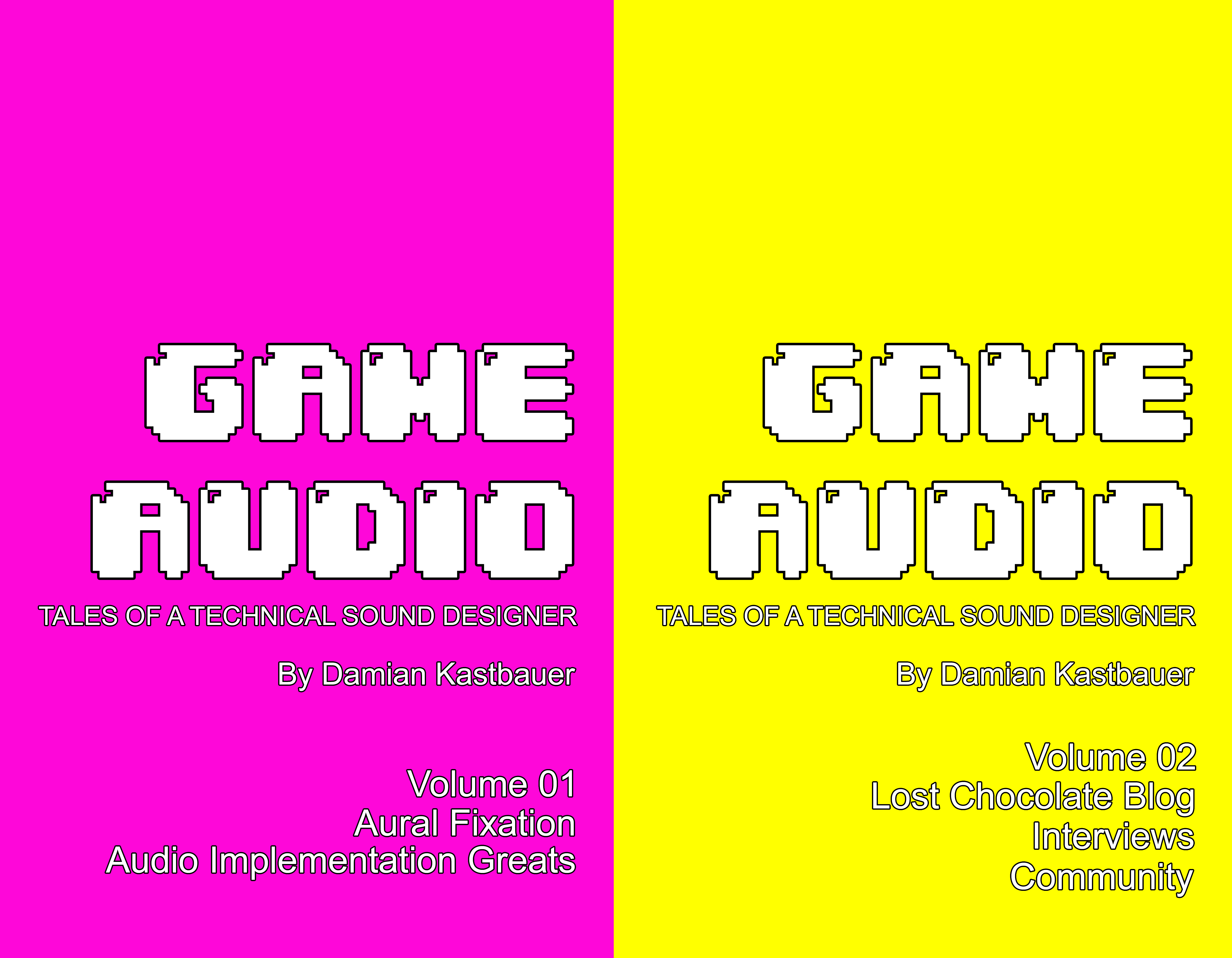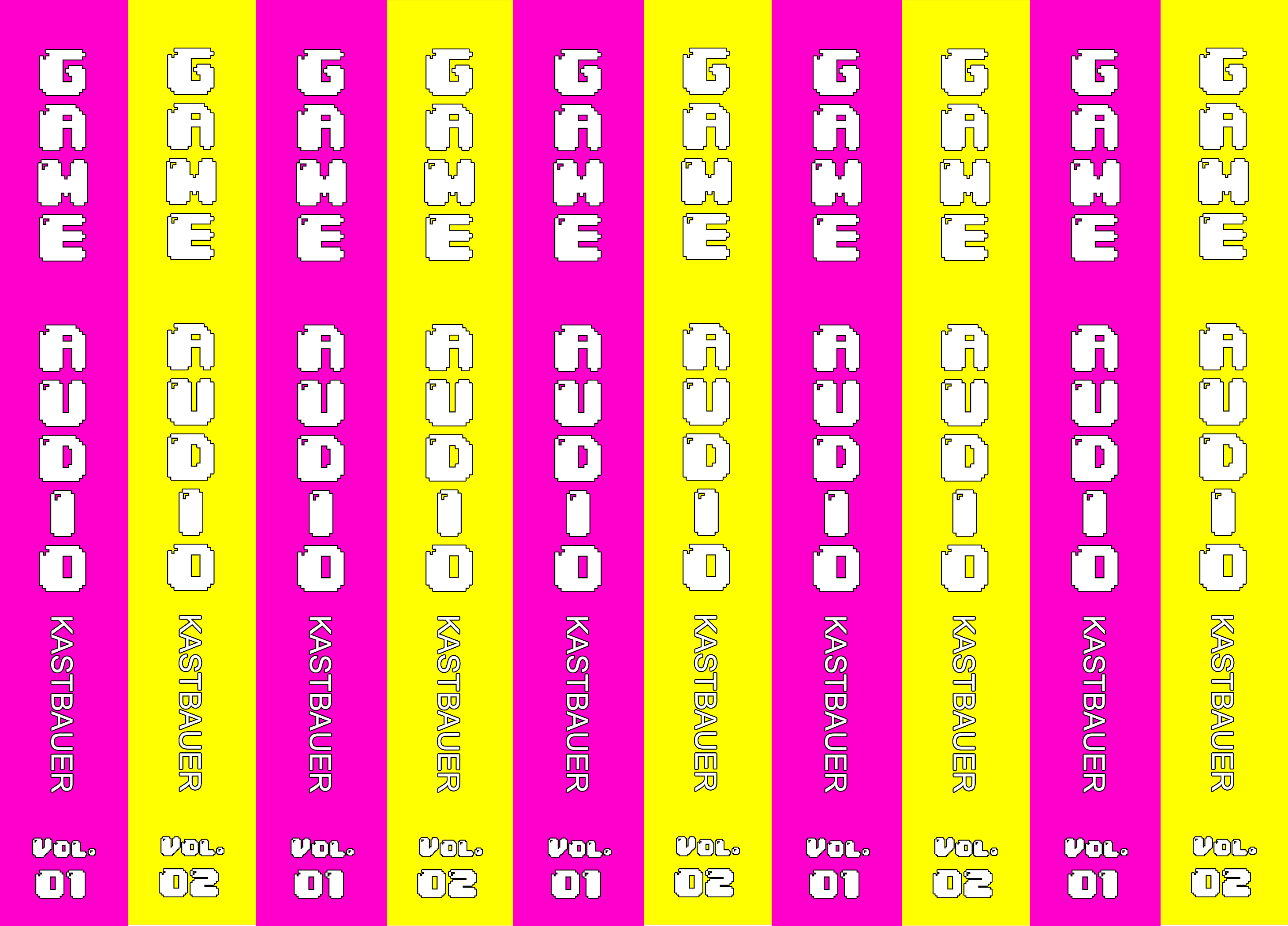While I've just released a two-volume collection of my writings on Game Audio from the past 10 years, there's one story that’s not been written until now: the Genesis of the Wwise Project Adventure. You can catch wind of it in the Intro & Outro to Game Audio: Tales of a Technical Sound Designer - Volume 02 where excerpts from the Wwise Project Adventure are reproduced with gracious permission from Audiokinetic. However, that addition is just the tip-of-the-iceberg indicating a relationship that, for me, has catalyzed a career in game audio and given me firm-footing as a technical sound designer. Read on for an untold story of game audio from the perspective of someone who experienced the rise of audio middleware.

In 2006 I attended my first GDC. By that time, I had found myself fully enamored with the tools used for integrating audio as a proxy between audio files and game programming. There were a few publically available audio middleware solutions (and a couple you could access through a maze of Non-Disclosure Agreements) but the learning curve was steep, documentation was scarce, and comprehension was slow-moving. Hours spent parsing commented code in disparate .xml files across demo projects or highlighting potentially relevant scripts buried within the pages of audio SDK’s had exposed me to skeletal framework and potential, but nothing approaching a full-circle understanding of the manipulation of sound interactively. So I went to the Game Developers Conference to help fill in the blanks between the knowledge I was able to glean from relationships and experience.
Little did I know that I was standing at ground zero for a revolution in game audio integration.
I don't remember much fanfare indicating the coming renaissance. If I had heard about the announcement of a new audio middleware tool in advance of the conference, I can’t remember. As many first-year attendees to GDC will attest: you’re lucky to get out with your sanity intact due to the heaping-helpings of raw knowledge being spooned out of every presentations honey pot. The buzz in those first-years was that Audiokinetic had created the Italian sports car of game audio middleware; a fast-moving and well-tooled audio pipeline solution (and in the beginning, it was priced to match!). But with a free-to-download authoring application and documentation that illustrated the benefits and strategies available within it’s (lovingly?) monochromatic-grey interface it quickly became the perfect training ground for the creative expression of interactive sound.
I chalk this feeling up to what I call the 360-degree strategy that Audiokinetic has employed since the inception of Wwise. From the beginning, everything within the Authoring Application was established in a way that allowed for the creation, auditioning, profiling, and iteration of systems to play back audio in a fully audition-able manner. Writing about Wwise in 2010 as part of the first installment of the Audio Implementation Greats Series (available in Game Audio: Tales of a Technical Sound Designer - Volume 01) I said “The ability to mock up every aspect of the engines, within the provided Soundcaster, brings the Wwise toolset further into a full prototype simulation outside of the game engine.” Everything from Parameter-controlled Blends, States, Switches and RTPCs could be manipulated on-the-fly before ever making it into a game. In 2006 Wwise emerged as a fully-formed implementation toolset and playground for a burgeoning technical sound designer such as myself and it would only get better from there.
I watched as Audiokinetic drove the game audio middleware industry and game developers associated with audio to achieve greater things. It wasn't long before other audio tools stepped-up their game with comparative features, things like: Interactive Music Systems, Extensible Mixing Architectures, Built-in Localization, and Game Profiling. However, without the comprehensive design infrastructure to support these additions, they often felt bolted-on, clunky, and poorly implemented without regard for authoring in what ended up feeling like a punishing pipeline of brutality. I spent the first 7 years of my career as a freelancer, and during that time had the opportunity to use, misuse, and ship with the best and worst that game audio tools had to offer (“To All The Audio Toolsets I've Loved Before…” - Volume 02)...trust me, I’ve muscled through some rough workflows and suffered at the obliquely referenced functionality of some primitive tools to get the job done. Ultimately, I ended up using Wwise across several projects during my formative years and the paradigm opened my eyes wide to the potential of audio tools.
Soaking in the Wwise methodology allowed me to harness the potential of interactive sound in a way that feels creative and empowering.

It was during this maelstrom of game audio tool technical submersion that I was approached by the folks at Audiokinetic to help streamline some of their early documentation. I would help combine, update, and focus two documents: Wwise Fundamentals & The Wwise Approach into the currently existing Wwise Fundamentals document. While I had been posting thoughts on implementation, authored a series for DesigningSound.org called Audio Implementation Greats, and began writing for Game Developer Magazine as part of their monthly Aural Fixations column (all of which is available in Volume 01) , I had never waded into technical documentation. This opportunity served as a perfect springboard where I was able to begin to understand the differences between the stream-of-consciousness writing I had been doing and the requirements of a detailed explanatory document. This work would eventually lead to the creation of the Wwise Project Adventure.
One of the greatest things to come out of my career in game audio are the friends and colleagues I’ve been able to meet along the way. These relationships are especially critical when collaborating on a project or helping to realize someone's vision. So when Simon Ashby at Audiokinetic asked me to wade into the deep-waters of technical documentation and create “a document that will make a new Wwise user up and running in a really short period of time” and help “to create a 'full' project where you can see the relationship between the Wwise project and how it's setup in code,” I felt that there was a level of trust as a result of our previous interactions. This proved to be incredibly important as the scope of the project unfolded over the next months to encompass the massive 300 page document that became the Wwise Project Adventure.
Truly a collaboration of the highest-order, by the end of the creation of version 1.0 we would pull in many of the folks at Audiokinetic, the content creation team at Bay Area Sound, an editor, translation, and a team of proofreading Beta-testers to help solidify and sharpen the resource. An absolute labor of love, the Wwise Project Adventure shifts between abstract game audio narrative (sketching out the forthcoming chapter’s material) and step-by-step technical implementation in three languages (English, Japanese, Chinese). Coupled with the provided fully-implemented Wwise Project, the goal was to give someone new to Wwise multiple ways to digest the educational content, either by reading through, working through, or exploring the already finished Wwise project. The approach that Simon and the team at Audiokinetic initiated with the Wwise Project Adventure also feeds into the 360-degree strategy I mentioned earlier, in that the overarching goal was to further extend the loop of learning that begins the first time you start working with Wwise and continues as your experience with the Authoring Application and methodology deepens.
At every step in the process working with Audiokinetic, I have been met with true creatives and individuals who are invested in, not only the success of Wwise but, the success of game audio professionals and creatives working with interactive audio. Each member of the team exudes a passion and commitment to their craft and it has been a joy coming to know many of them through work, collaboration, and a visit to their office in Montreal during the MIGS conference in 2014. It’s no wonder that I have felt creatively empowered through the use of Wwise over the years with this team of unique and talented individuals driving the next generation of game audio.
I’d like to carry forward and augment thanks to the original group who helped launch the Wwise Project Adventure: Simon Ashby, Etienne Caron, and Bernard Rodrigue from Audiokinetic. Editor Judy Lapalme. Continuity experts: Hrishikesh Dani, Luca Fusi, Jack Menhorn, Roel Sanchez, Michael Taylor, and Rob Bridgett along with Robert Mollon and additional staff at Audiokinetic during the interim years. It was with their help that the document was elevated from frantic scratchings and verbose insanity into a sharpened axe of implementation tutelage. My deepest thanks.
So, here I find myself at a milestone in my career with the release of this two-volume collection of writings, surveying the game audio landscape spread out behind me and reflecting on the components that have comprised my experiences as a technical sound designer. Audiokinetic and Wwise have contributed to a fundamental appreciation of interactive audio, technical sound design, and game audio in a way that I continue to be deeply thankful for. I look forward to the years to come, the challenges and successes, and the people in the community who continue to inspire me. All the best in your future endeavours!
Game Audio: Tales of a Technical Sound Desgner Volume 01 & Volume 02 is self-published and available in Softcover - Color or Black & White print-on-demand editions or digitally (PDF) via Blurb.



Comments